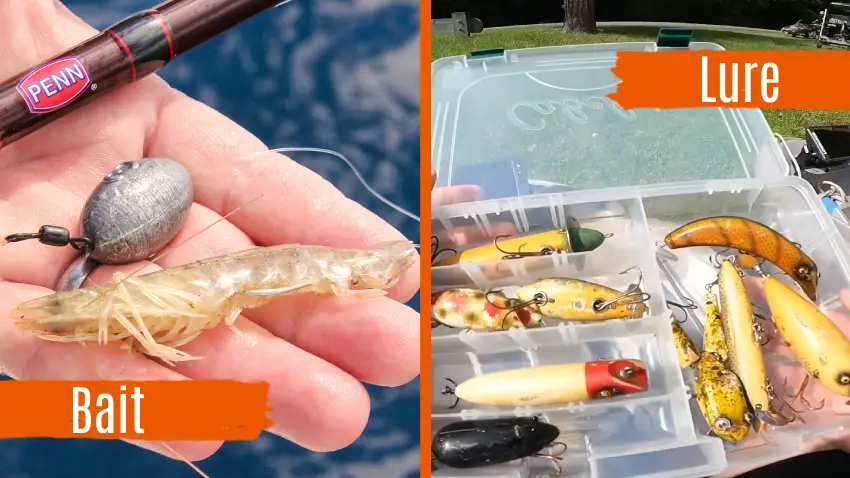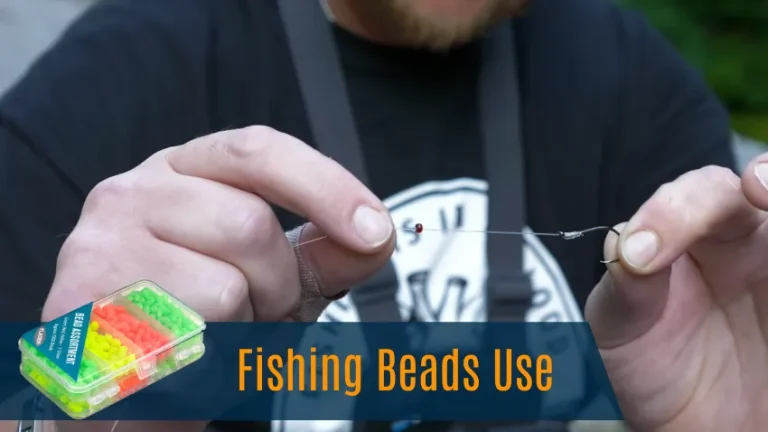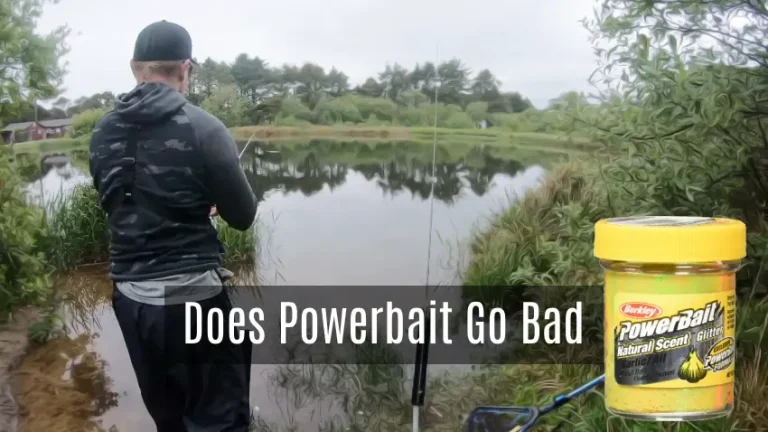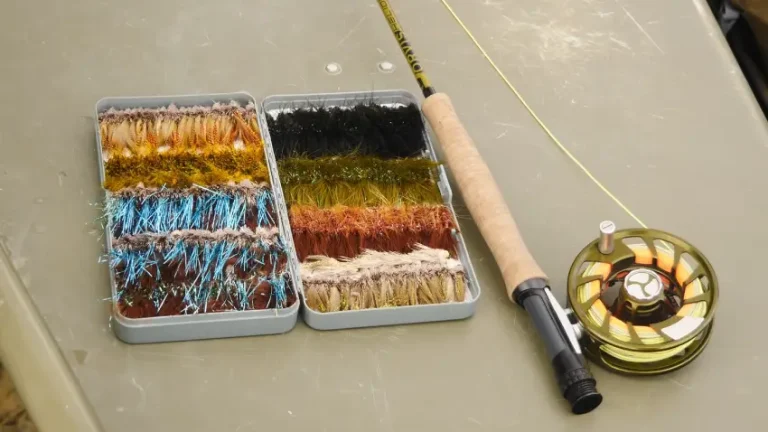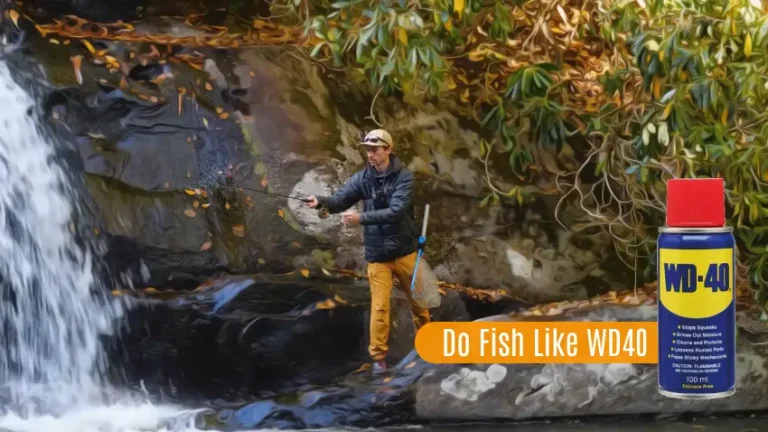Bait vs Lure for Fishing: 7 Primary Differences
When considering fishing, one of the fundamental decisions anglers face is whether to use bait or lures. Both approaches have their merits, and choosing between them can significantly impact your fishing experience and success.
Bait fishing uses natural substances to attract fish, like worms or minnows. This fishing is a more passive approach, where you cast your bait and wait for fish to bite.
Conversely, lure fishing involves imitating prey, like plastic worms or crankbaits. This fishing requires more active participation, as you must manipulate the lure to entice fish.
Through this article, we’ll discuss seven major differences between lure and bait fishing to better understand. We will also discuss the types of lures you can use for fishing. So keep reading.
Key Differences Between Bait and Lure Fishing
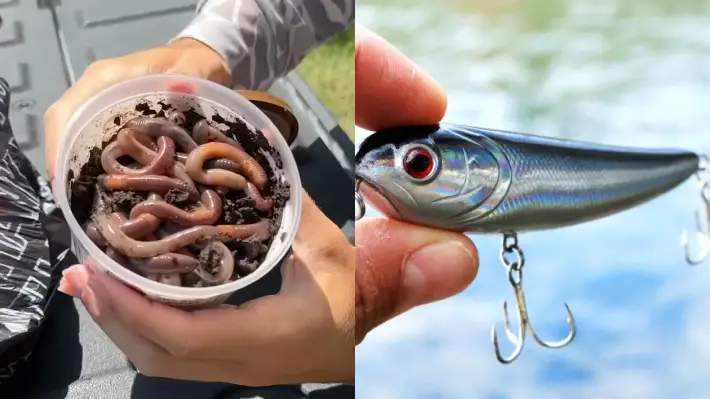
Bait fishing and lure fishing are two ways to catch fish, and they’re very different:
- Nature or artificial mimicry
- Active or passive fishing
- Selectivity and bycatch
- Catch and release
- Versatility
- Suitability in different conditions
- Cost and reusability
1. Nature or Artificial Mimicry
Bait fishing usually involves using live bait, such as commonly used worms, insects, and minnows. These baits attract fish through their natural scent and movement.
On the other hand, lure fishing involves using artificial lures designed to imitate the movement and appearance of real prey. Fishing lures come in different shapes and are made of plastic, rubber, or metal, such as plastic or rubber worms, fish, insects, or frogs.
2. Active or Passive Fishing
One key difference between bait and lure fishing is the level of activity involved. Bait fishing tends to be more passive, where you set up your bait and wait for fish to come to you. This method is suitable for beginners as it helps them understand fish preferences and behavior.
In contrast, lure fishing is more active and engaging. It requires casting, reeling, and creating enticing movement skills to attract fish. This fishing offers a dynamic and exciting experience, as you must constantly manipulate the lure to mimic prey and trigger the fish’s predatory instincts.
3. Selectivity and Bycatch
Lure fishing offers a higher level of selectivity and reduces the chances of unintended fish being caught. These are designed to replicate the behavior and movement of prey species that specific predator fish normally feed on.
When using bait, it can attract various fish species to your fishing spot, including non-target species. This increases the likelihood of an unintended catch, also known as bycatch.
4. Catch and Release
Bait fishing often leads to deeper hooking, harming fish and making catch and release more challenging. The use of bait increases the chances of the hook being swallowed by the fish, resulting in more damage to internal organs and reducing the fish’s chances of survival after release.
Conversely, lure fishing tends to hook fish in the jaws, lips, or mouth, making catch and release easier and more fish-friendly. This targeted hook placement minimizes the risk of injury to the fish and improves its chances of survival after release.
5. Versatility
Bait fishing is effective for specific fish species and works best in murkier waters where scent is crucial for attracting fish. Live bait can live and is often used with stationary fishing techniques, such as bottom or float fishing.
Alternatively, lure fishing is highly versatile and can target a wide range of fish species. Lures come in various shapes, sizes, and colors, allowing anglers to mimic different prey and attract fish in different fishing environments.
6. Suitability in Different Conditions
Bait fishing is more effective in murky or cold water, during nighttime, or targeting specific species. It is designed to attract fish from a distance, making it ideal for situations where you need to entice fish in low visibility or when they’re less active.
On the other hand, lure fishing excels in clear, warmer water or targeting aggressive fish. Lures are designed to mimic prey and trigger a predator’s hunting instinct, making them highly effective when fish seek food.
7. Cost and Reusability
Bait fishing can be cost-efficient if you gather your bait, but live bait needs to be refrigerated and is typically a one-time use. This means you’ll need to constantly replenish your supply, which can add up over time.
Meanwhile, lure fishing may require a higher upfront cost for purchasing the lures, but they’re reusable, making them more cost-effective in the long run. With proper maintenance and care, lures can be used season after season, eliminating the need for constant repurchasing.
Types of Lures for Fishing
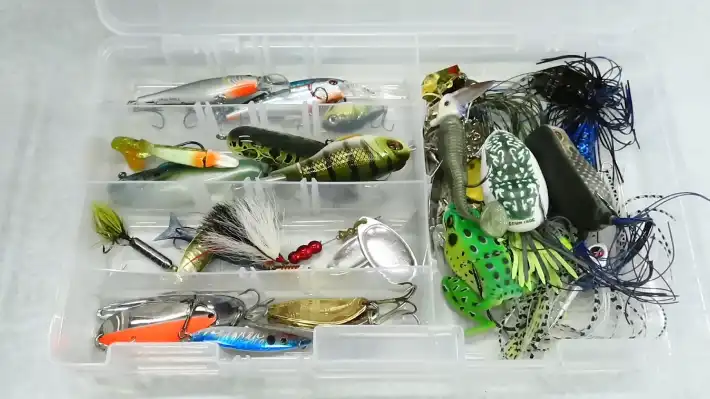
When considering fishing lures, there are several types that you can choose from.
Plugs or Crankbaits
You can use various types of plugs or crankbaits as lures for fishing. These hard plastic lures are designed to mimic the appearance and movement of bait fish or other prey.
Plugs and crankbaits are typically made from solid or hollow plastic, with a lip attached to the front. The lip, often made from metal or plastic, determines the diving depth and action of the lure.
Jigs
Jigs are a popular fishing lure with a weighted head and hook, making them ideal for bottom feeders and requiring jigging. They have a weighted head on one side and a hook on the other, which allows them to sink quickly to the bottom of the water.
These are versatile and can be used in various fishing conditions, including freshwater and saltwater. They come in different shapes and sizes, allowing anglers to target specific fish species.
Spinnerbait Lures
Another popular fishing lure you should consider is the spinner bait lure. These lures are designed to move horizontally through the water, attracting fish in murky waters. They feature spinning blades that create vibrations and mimic the movement of bait fish, enticing predatory fish to strike.
Spoons
It’s often helpful to incorporate spoons as a lure into your tackle box when fishing. Spoon lures are curved, concave metal lures that imitate injured bait fish. They got their name because they were originally just spoons with cut-off handles.
Spoon lures are designed to wobble in the water, attracting fish with their realistic action. These lures are highly effective for catching fish, including bass, trout, pike, and salmon. They can be used in both freshwater and saltwater environments.
Soft plastics
Soft plastics are another popular type of lure that you should consider adding to your tackle box when fishing. These lures are designed to imitate various aquatic creatures, making them suitable for bass fishing. Soft plastics can mimic anything from minnows, worms, and crawfish to lizards and frogs.
Flies
To effectively attract fish, you should consider using flies as lures during your fishing expeditions. Flies are traditionally used in fly fishing and are designed to imitate insects, crustaceans, or prey. They work particularly well in areas where fish approach the water’s surface.
There are two main types of fly lures: surface flies and subsurface flies. As the name suggests, surface flies are designed to float on the water’s surface. Subsurface flies, on the other hand, are designed to sink below the water’s surface. They’re typically weighted or made with materials that make them sink slowly.
What Can You Use as a Live Bait for Fishing?
When using live bait for fishing, several options are available to you.
Worms
You can often use worms as live bait for fishing various freshwater species, including Panfish, Bass, and Trout. Nightcrawlers and Red Worms are two common types of worms used for fishing.
Nightcrawlers are larger worms, usually 6-8 inches long, making them suitable for targeting bigger fish like Bass and Trout. Alternatively, Red Worms are smaller and more slender, ranging from 2-4 inches long, making them ideal for catching smaller Panfish.
Leeches
Leeches are an effective live bait option for attracting larger game fish, such as Walleye and Perch. These slimy creatures are known for their enticing movement in the water, making them irresistible to predatory fish.
Minnows
Live minnows, such as Shad, Shiners, and Suckers, are highly effective for catching various species, including Largemouth Bass, Walleye, Pike, and Trout. These small fish serve as natural prey for larger predatory fish, making them an enticing choice for anglers.
Insect
Grubs, crickets, and grasshoppers are less common but can be used for panfish and trout, especially in lakes and ponds. Grubs are the larvae of beetles and can be found in soil or decaying wood. They’re a favorite food of many fish species and can be easily hooked.
Crawfish
When fishing with live bait, crawfish can be a highly effective option, especially for species like Bass, in freshwater environments. Crawfish, also known as crayfish, are crustaceans found in rivers, lakes, and streams. They have a distinctive appearance with a hard exoskeleton and a long, segmented body.
Shrimp
Shrimp are a popular choice for saltwater fishing, as they can attract various species, such as Redfish, Trout, and Snook. When using live shrimp as bait, keeping them alive and active is important. You can use a live bait container or a bait bucket with holes for water circulation.
Maggots
Maggots, or fly larvae, are particularly effective when targeting Panfish, especially during ice fishing. These small, wriggling creatures are an excellent choice due to their natural smell and movement, miming the behavior of insects that fish typically feed on.
Squid
Squid is a popular choice for saltwater fishing due to its versatility and attractiveness to species such as Tuna and Mahi-Mahi. Its soft and tender texture makes it highly appealing to predatory fish.
Is bait fishing easier than lure fishing?
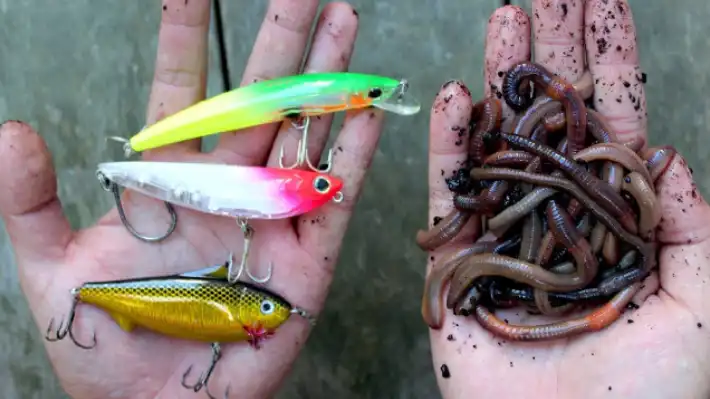
Using bait for fishing is generally considered to be a more straightforward and effortless approach compared to using lures. When bait fishing, you must attach the bait to your hook and cast it out into the water. The natural scent and movement of the bait will attract fish, making it easier for you to catch them.
Is lure or bait better for catfish?
When targeting catfish, determining whether to use a lure or bait depends on your specific fishing goals and preferences. If your primary goal is to catch many catfish or specifically target trophy-sized specimens, traditional live bait is generally recommended.
Live baits such as worms, minnows, or cut bait are effective at attracting catfish due to their natural scent and movement in the water. These baits can be presented on various rigs, such as a Carolina rig or a slip sinker rig, allowing you to effectively cover different depths and areas of the water.
What bait attracts the most fish?
Freshwater fishing can be successful with various baits such as worms, leeches, minnows, crayfish, crickets, and grasshoppers. These baits emit natural scents that attract fish from a distance. The movement of live bait also adds to their appeal.
Saltwater fishing requires a different set of baits. Sea worms, eels, crabs, shrimp, squid strips, and cut-up fish pieces are excellent choices. These baits release strong odors that can entice many saltwater species.
Do catfish prefer live or dead bait?
Catfish prefer live bait over dead bait. This is because catfish are scavengers driven by their strong sense of smell and taste. Live bait provides a more enticing scent and movement that catfish find difficult to resist.
When using live bait, use fresh dead bait, as catfish are attracted to the smell of decaying organisms. Fresh dead bait can mimic the scent of live prey and still effectively attract catfish.
Fishing Bait or Lure: Choose One According to Your Skill
Choosing between bait and lures in fishing isn’t a one-size-fits-all decision. While both bait and lures have advantages, it ultimately depends on the fishing conditions and personal preference.
It’s interesting to note that according to a study by the American Fisheries Society, live bait attracts more fish than artificial lures. However, this doesn’t mean lures are ineffective, as they can still be highly successful in certain situations.
Whether you opt for the scent of live bait or the lifelike mimicry of lures, the key is to enjoy the journey and appreciate the diversity of the fishing world.

